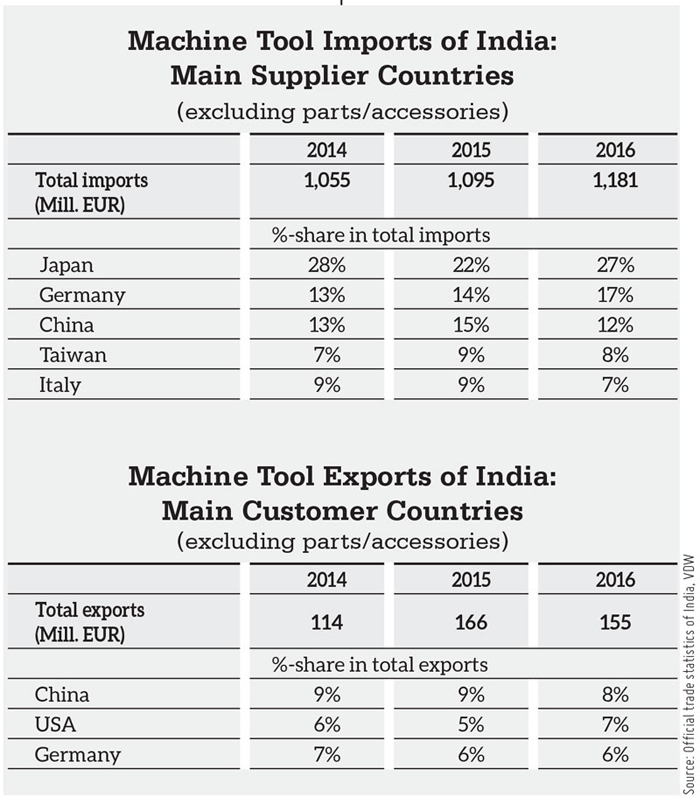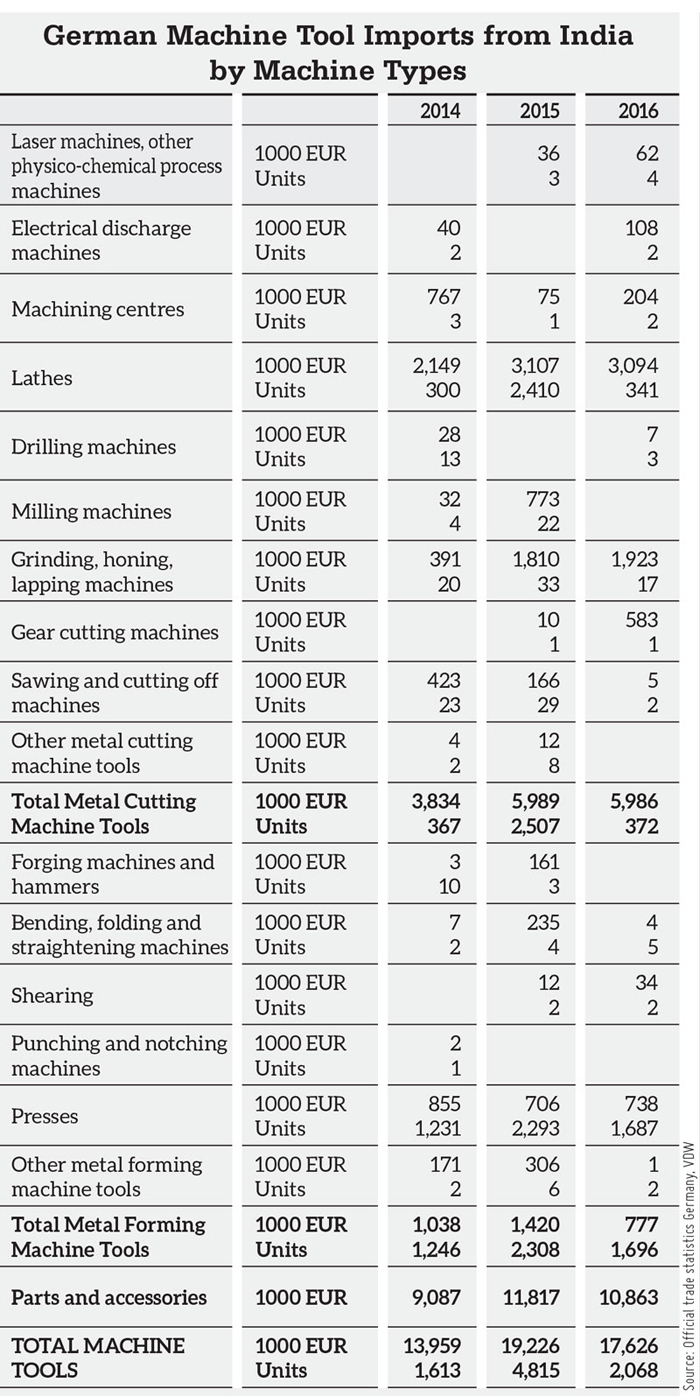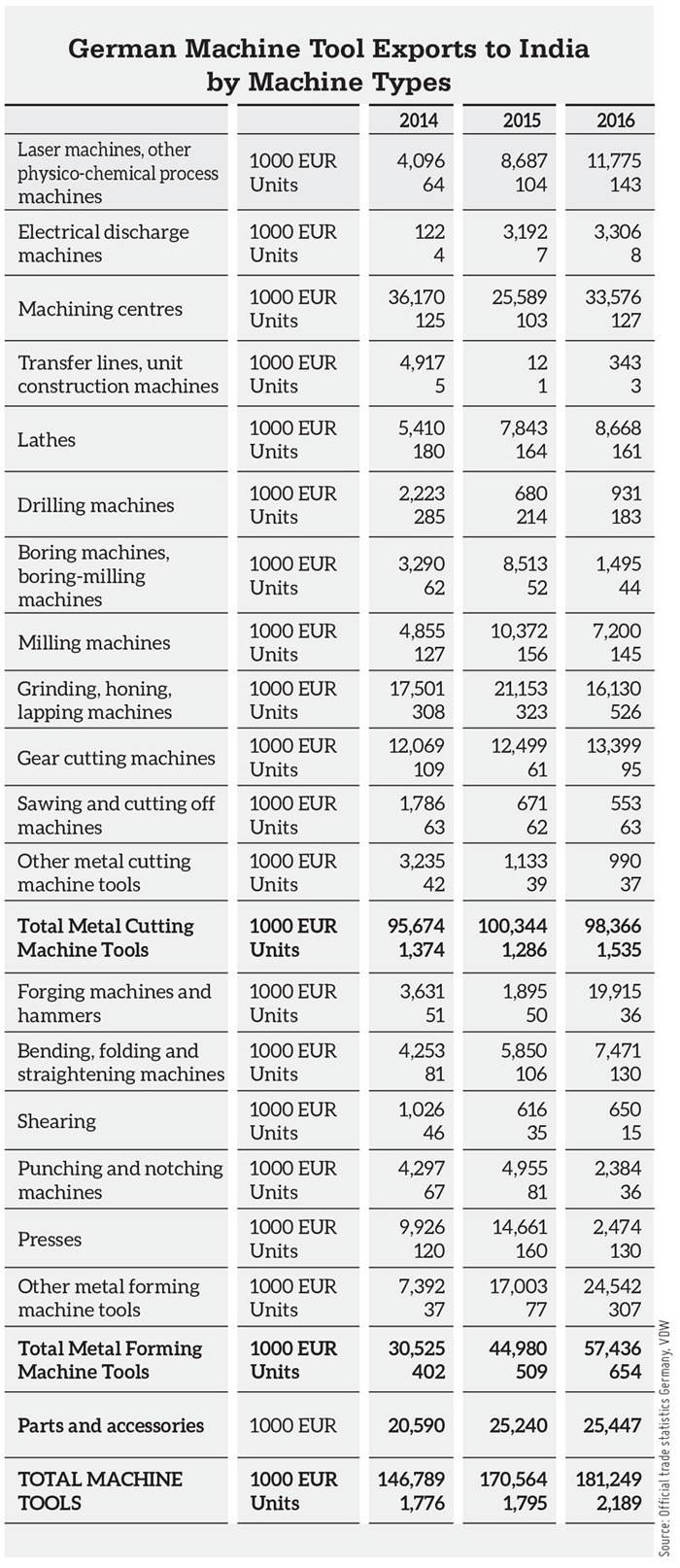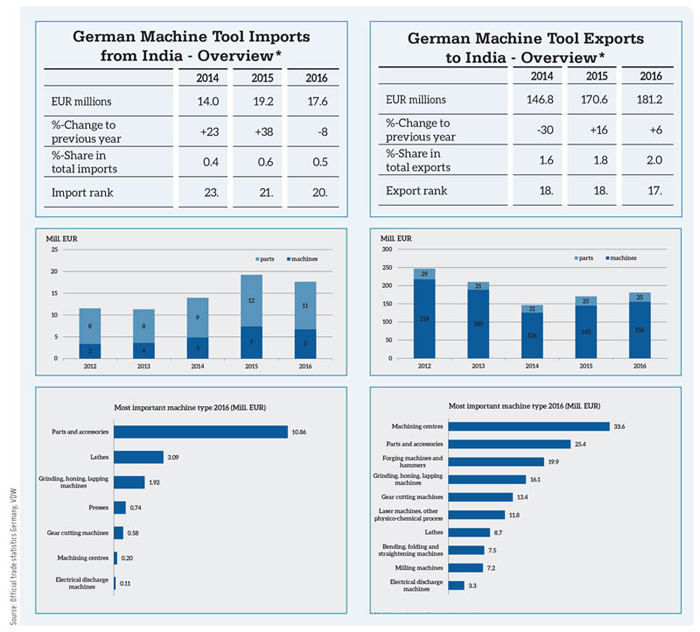India-Germany : Making the Best of Each Other's Strengths
The interesting Indo-German trade history dates to the 16th century and since then the strategic partnership between the two nations has only been getting stronger. With Germany being India’s seventh most important trading partner worldwide and India ranking 24th in Germany’s global trade in 2016, the duo has been discovering opportunities in each other’s strengths. The volume of trade between the two countries has increased rapidly since India’s economic reforms that took place in 1991. In 2015, the bilateral trade between India and Germany grew further.
German imports from India increased by seven percent compared with the previous year and German exports to India by ten percent. This trend continued in 2016.
Last year’s trade in a snapshot
According to Rajesh Nath, Managing Director, German Engineering Federation (VDMA), the bilateral trade between India and Germany grew to € 17.42 billion in 2016 from a figure of nearly € 17.29 billion in 2015.
Indian imports from Germany amounted to € 9.8 billion. The exports from India to Germany attained a value of € 7.62 billion in 2016, he informed.
The total import of machinery from the whole of Europe to India reached a volume of € 6.73 billion. This was an increase by 2.4 percent compared with the same period in the previous year. The total import of machinery from Germany reached a volume of € 2.97 billion. This was an increase by 1.7 percent compared with the same period in the previous year.
Indian machine tools export to Germany
“India is a not-to-be-under-estimated supplier of machine tools,” said Dr Wilfried Schaefer, Executive Director, German Machine Tool Builders’ Association, VDW. “In 2015, Germany primarily bought parts and accessories from Indian manufacturers, worth just under € 9 million.”
“Due to digitisation and networking of the machine tool industry, the demand for software and apps will continue to rise in the future. So, there is abundant potential for expanding bilateral business relationships.”
Dr Wilfried Schaefer,
Executive Director,
German Machine Tool Builders’ Association, VDW
“Maharashtra with around 47.3 percent share of German investments remains to be the most attractive destination for German investments in India. In the last four to five years, Pune has become the hotbed for new German investments.”
Rajesh Nath,
Managing Director,
German Engineering Federation (VDMA) India
According to a report by VDW, Indian machine tools such as: laser machines; electrical discharge machines; machining centres; transfer lines; unit construction machines; lates; drilling machines; boring machines; boring-milling machines; grinding, honing, lapping machines; and gear cutting machines; and metal forming tools such as forging machines and hammers; bending, folding and straightening ma-chines; shearing, punching and notching machines, presses; and other parts and accessories were exported to Germany in 2016. Parts and accessories led the pack and amounted to € 10.86 million of export to Germany.

The industrial production output and capital investment for machine tools in India will grow significantly this year, believes Dr Schaefer, given the substantial support that is being received by the manufacturing sector due to “Make in India” campaign launched by the country’s government.
India has, in recent years, evolved into one of the world’s most important suppliers of software. Germany, by contrast, is a front-runner in the field of Industry 4.0. “Due to digitisation and networking of the machine tool industry, the demand for software and apps will continue to rise in the future. Hence, there is abundant potential for expanding bilateral business relationships,” he added.

Imports from Germany
As per the information by Nath, in 2016, out of approximately € 18.6 billion of machinery imported by India, Germany had a share of around 16 percent, behind China (32.9 percent) and ahead of Japan (11.2 percent) and Italy (seven percent).
The report from VDW reveals that the kind of machine tools that were exported, were the same as exported from Germany. The most important machine type was machining centers that amounted to €33.6 million.

Among the machinery sectors
in India, major demand of German equipment was for Power Transmission Engi-neering (10.8 percent), Textile Machinery (without dryers (eight percent), Machine Tools (6.09 percent), Plastics and Rubber Machinery (six percent) and Valves and Fittings
(5.03 percent).
German investment in India
A report produced by the Indian Embassy in Germany reveals that German investment in India in 2016 was to the tune of Euro one billion.
Top sectors that have attracted FDI inflows from Germany are Automobile industry, Services Sector, Construction (infrastructure) activities, Industrial machinery, and Drugs & pharmaceuticals.
The state of Maharashtra has 47.3 percent share of German investments. It remains to be the most attractive destination for German investments, with Pune city becoming the hotbed for the same.
German companies are setting up manufacturing in India in addition to the sale and service offices. Many German companies and VDMA members are planning towards more investments in India. German companies like Siemens, KUKA, Liebherr, Schwing Stetter, Wirtgen, ZF and Thyssenkrupp, to name a few, have invested substantially in the last three to five years, informed Nath.
Knowledge-driven sectors also hold good potential for co-operation between the two countries. Fields such as IT, biotechnology, renewable energy, and green technology offer good scope too.
New technologies stirring a storm in manufacturing
“The digitisation and networking of production operations – from the shop floor to order processing – is without a doubt one of the most promising developments,” said Dr Schaefer. With Industry 4.0, the German machine tool industry thus offers the Indian customers maximised expertise for the internet of things (IoT) in the production environment. “This ties in with the internationally appreciated precision and productivity of machines ‘Made in Germany’,” he proudly added.
Another future-friendly technology, according to him, is additive manufacturing. “Since it ensures more efficient material utilisation and enhanced resource-economy, 3D printing indubitably has a future.”
Lightweight construction using fibre composite materials is another topic to the list that has been addressed by many German research institutes and machine tool manufacturers.

German machine tool sector motivates
That German machines are among the best in the world is a well-known fact. German
companies cooperate with highly sophisticated component suppliers, customers and also work closely with the academic community, explained Dr Schaefer. German manufacturers, therefore, have well-trained engineers and skilled workers who ensure the high quality and reliability of the products, repeatedly finding creative solutions for the multifaceted production requirements of their customers. They also transfer their knowledge to their customers and support them in setting up and maintaining
the machines.
Getting stronger
The two countries have been drawing strength from each other’s manufacturing prowess. Sectoral pundits are confident that the new initiatives in trade, bilateral investment, energy, energy security, the environment, culture, education, training, research, technology and defence will catalyse and activate the great potential of their bilateral ties.
Author
Poonam Pednekar
Chief Copy Editor
Magic Wand Media Inc
poonam.pednekar@magicwandmedia.org




 Facebook
Facebook.png) Twitter
Twitter Linkedin
Linkedin Subscribe
Subscribe